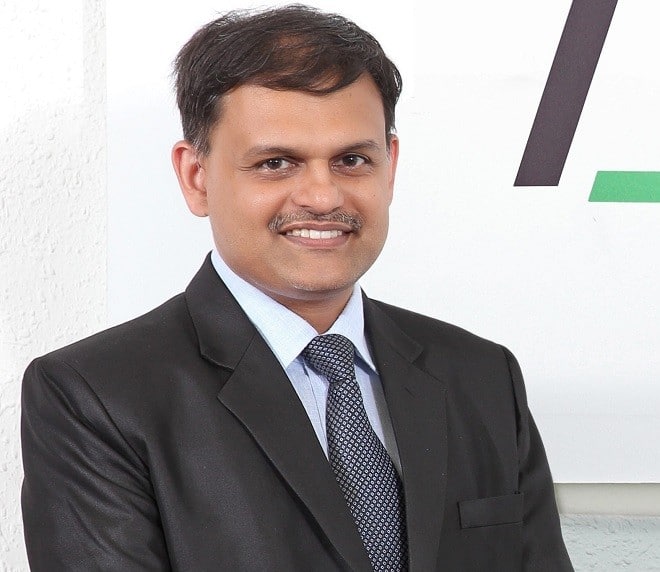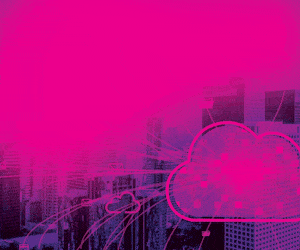Avnet is generally known as a leading distributor of electronics components. But, of late, we have been noticing its projection as a complete solutions provider. To understand the strategy better, Rahul Chopra spoke to Sambit Sengupta, who heads the Solution Sales team for entire Asia! Here’s what we discovered…
Q. Is there any difference between Avnet in India and its global counterparts?
A. We are a global company with a global approach to solving customers’ problems. At the same time, we are local as well when it comes to interacting with customers, understanding their local challenges, and developing trusting relationships locally.
Q. Till what level is Avnet providing a solution? At some stage won’t you end up competing with your customers itself who are also providing those access-level solutions? Or is Avnet now providing end-level customer solutions and products?
A. We are very partner-centric. We believe that the entire solution game cannot be played by a single company. We (Avnet) are like providers of Lego bricks to our customers and have all the templates on how customers can assemble those Lego bricks. At times, we can also help in assembling some portions of it. But, it is never our intention to compete with our customers and partners.
When it comes to digital transformation (aka IoT), our solutions range from edge devices to cloud to dashboard integrated with AI consultancy and services. Those are our Lego bricks. It’s not only semiconductor but sourcing the semiconductors and taking data from the sensors. Many customers ask us to provide a gateway. So we make our gateways and give options for more suppliers and implement it into a platform.
We also provide a complete PaaS such as IoTConnect and SaaS platforms for data integration and analytics. These are built on Microsoft Azure. These platforms have all the basic ingredients for different use cases. Our customers or partners can simply customise them for their specific needs.
Q. Large customers typically like to have a solution provider implement the solution. So, then the system integrator becomes your customer and the end customer becomes their customer? Or do you bring in your partners who will deploy the final solution?
A. It’s a mix of both. We like to work with system integrators and a lot of our go-to-market strategy is with system integrators. Very large customers and OEMs either work with SIs or with ISVs. We are happy in providing solutions to the SIs. They add their competence to it.
Let’s say I am giving them an AI-based SaaS solution. Then they can modify it according to their end-customer’s requirement. Sometimes we collaborate with such partners and reach the same end-customer. It is very transparent to the end-customer as to who is doing what.
Q. Does it also mean that there could be a case where the customer and Avnet are working together such that Avnet is working as the system integrator for that customer and deploys the whole solution with the customer’s IT or technical team?
A. Not exactly. We are not in the SI space, at least not in India or Asia. Globally we do have a company owned by Avnet known as Avnet Integrated. Through them, we are capable of providing system integration services. But we leave it to the customer whether they want that service or not. Most customers in India have their own fixed SIs or fixed ISVs and we are happy to support that.
Q. So how do you avoid a conflict of interest between Avnet and other organisations that provide complete solutions like fleet management or asset tracking?
A. There’s no conflict. They are our customers. Many of them (like the example named) continue to purchase their GSM modules, MCUs and complete semiconductor stack from us. If they want to take this complete device to the SaaS solution for a wider market, then they can take help from Avnet. So we become their partner to collate this and make it a part of a bigger solution.
Q. Is there a formal procedure for like-minded organisations to partner with Avnet?
A. Yes, there is one now. It was launched at CES in January this year! It’s called the IoT Partner Connect Program and is applicable globally. You will see the upcoming launch of our marketplace also.
Whether our partners are device manufacturers, SIs, solution providers or ODMs, they are all given access to something we call as Play Zone. So we invite them to our partner program where they can host their device or their solution on our partner connect program. They get to make their POC in our Play Zone, which is a sandbox kind of environment using our platform. And then Avnet works with the global end customer to promote their solution. So it’s a very partner-centric approach that we have taken in the connected world or the IoT sector.
Q. How are you viewing the growth of IoT?
A. The number of connected points has gone up tremendously. It is hard to say whether it meets what was predicted five years ago. It is not known as per data whether it is ten billion devices or twenty billion devices. But what is known is that there has been a huge percentage increase in the number of connected devices.
It is true that many of these remain at the POC stage and don’t move forward to the production level. However, it depends upon the end customers. If customers have a real problem, let’s say a pharmaceutical company wants to see how frequently their machines are getting knocked off or are getting under trouble, then they can deploy IoT solutions that provide predictive maintenance.
IoT is not only about getting revenue from the technology but is more to do with solving real business problems of a customer. If any solution solves a problem, then customers will go for that solution and invest in it.
Q. Many opine that deployments are not matching the hype around IoT. What’s your take on this subject?
A. For anything new, it’s human nature that there would be resistance and reluctance to change. As IoT offers a solution to the problem that we face, I am positive that IoT is here to stay. People facing problems regarding monitoring of their assets can benefit from track and trace solution. A few years back, we were not sure if people would go for rental bikes, but now many start-ups have come up and changed our perspective. And they used IoT devices to solve the challenge. So if there’s a problem that IoT can solve, customers will readily adopt.
Q. With this whole COVID-19 situation happening, how have you as the head of the solutions team, seen discussions change with your clients? Which ones have reduced and which ones are happening more?
A. Pre-COVID, we had a very vertical-oriented focus. Avnet was doing well in the industrial and automotive segments. These customers have been our partners for the last 5 years. Now, some of these end-customers are not doing that well and are not able to sustain their business. So we are supporting them in various ways.
For example, consider a customer who is good in production and has a business line where he has multiple plants. Today, he is more worried about restarting those plants. Therefore, his focus has shifted from buying components from Avnet to asking Avnet to help secure his people when they come in every day. That help can be in the form of contact tracing solutions to face-recognition attendance systems (instead of fingerprint-based attendance systems). So it’s becoming more solution-centric rather than just transactional sales where we act as a distributor.
Q. With all the contactless technology and a focus more on security and safety, are there any specific kind of applications that you are seeing having more demands and solutioning?
A. We call it as medical technology or remote-monitoring solutions. For example, a customer comes back saying that Avnet has a smart healthcare solution as a SaaS platform. He asks us to take all the data from different monitors placed in the ICU, set up an IoT box (gateway) and enable the doctors to have data in their hands remotely. This is an example of an end-to-end solution.
These kinds of solutions are becoming very popular worldwide. So, we are working with some independent design houses or ODMs, locally as well as outside India who are giving the device. We are then importing those devices to our gateway as well as directly using a simple mobile, which goes on our platform to give them a dashboard of real analytics.
Q. So, the pandemic is driving demand for new kind of solutions?
A. Yes, we are seeing pharmacy-based solutions where there is a demand for live inventory status as fewer people are managing those pharmacies. You want inventory on-the-go and just-in-time inventory control at critical care centres.
The demand for connected bands for track and trace applications has gone up. There was a lot of demand for thermal cameras that connected to the cloud. Avnet with sister company element14 brought these cameras and platform solutions to many of our customers.
Q. You mentioned the IoT analytics suite, a PaaS as well as a SaaS server on Azure. What all different components/Lego bricks are there in your portfolio?
A. On the device side, all the sensor manufacturers are our partners. Some customers are capable enough to take this off-the-shelf from us and make their super-sensor. Or sometimes they look forward to us to build the super-sensor (complete sensor module). For example, it’s an AI-on-Edge kind of device where we will be putting multiple sensors on a single board – thermal, temperature, humidity, accelero, gyro and different types of sensors. And then we provide connectivity. It can be through a BLE module and then we give it to the gateway where the sensor nodes talk with the gateway. So, these are the two aspects when we move from the device to the gateway.
Now moving on to the platform, Avnet felt that there was a gap between the IoT suites provided by the cloud-biggies such as Azure, AWS, Alibaba or Google and the kind of analytical dashboards needed by customers. So we brought in ready to plug-and-play analytical platforms such as SaaS tools. These SaaS functions are in our platform.
Suppose someone wants smart facility management in a hospital or a factory. The CEO or the CXO or the chief digital officer wants to monitor how the employees are coming in and what’s their temperature parameter. So, right from the sensor to the smart facility management – all are a part of the SaaS solution. This SaaS solution-set is never-ending. It is based on the customer.
For example, track-and-trace is a big application that we see, for logistics companies. Traditionally, logistics companies were not our customers but now they are because they want to improve the management of their drivers and fleet. They want to get all types of analytics such as how much time they have spent in a large factory and how their health parameter is – all in a nice analytic way of seeing it in a dashboard.
Q. What’s the pricing model for your SaaS solutions?
A. We have both pay per license and pay per use. But the majority of our customers like to opt for pay per use.
Q. Do you provide the entire solution on a SaaS model i.e. the customer pays a monthly rent/fee for the entire solution (opex) and never invests in the assets (capex)?
A. We are flexible in the pricing model for our customers, as we are keen to solve business problems. However, most customers prefer the opex model where they just pay a monthly subscription fee.
Q. Given that you have your gateways and also sell gateways of many brands, how do you handle the challenge of providing unbiased advice to customers?
A. It’s very specification oriented. There are various gateway manufacturers right now for different use-cases. So we go by end-use.
Q. Is the team developing the SaaS platform also working out of India and part of your team?
A. Avnet acquired a company two years back called Softweb Solutions. It’s headquartered in the US and has engineers in the US and Ahmedabad. They are mostly staffed with data scientists, AI scientists and people who have worked extensively on the Azure platform for the past 13-15 years. This is the capability that was acquired by Avnet, which is global and for every solution team across the world.
Q. A lot of discussions have happened around the edge where it has been said that AI and ML can no longer be sustained on the cloud and have to come to the edge. Since you mentioned about AI on edge boards that you have, how do you see that trend evolving?
A. Many things will remain on the cloud or move from on-premise to the cloud. But in use cases where decisions need to be made then and there, AI will move to the edge. This is a valuable trend that is prevalent everywhere. For example, in the case of predictive maintenance, there is no point in putting decisions or algorithms in the cloud.
Let’s say in a cloth mill, people want to know when and where the roller pin breaks down so that they can do maintenance. Or for that matter, imagine a customer who has multiple motors running at a time. In the pre-COVID era, that person used to employ four workers who checked the functioning of the motor. And if it worked erratically, then changed it based on experience.
Now that same experience can be learnt and translated into motion sensing with sensors. And these will be smart edge devices. Avnet has such devices called SmartEdge Agile devices that are being brought to the market. We are also customising it for our end customers.
Q. Is it like different devices created for different use cases or is there only a single device to which you insert different modules as per the application?
A. As of now, it’s a single board but we will be coming out with a different variety of this device in the future based on the feedback we receive from our customers.
Q. How has the response been for them in India?
A. It’s been good. We are seeing partners and customers who have already started using it in proof of concept rollouts.
Q. With respect to India, which are the areas where you expect demand to continue to grow despite the pandemic?
A. What we feel is that track and trace will remain. The logistics team will still require insight into end-to-end tracking and assets whether people are put up in-home or go back to the office. Asset monitoring in both industrial IoT and as well as in track and trace will be important.
Remote monitoring will see more people asking for the solution on remote monitoring, remote inventory management and facilities because when people start moving back to their offices, then they may need to monitor the facilities remotely. It will not be a person who will be moving around and checking everything. It will be much more contactless.
Q. Would it be correct to assume that the geography under you—the whole of Asia—could emerge as the leader across all geographies given the faster pace of digital transformation in this region?
A. Asia has a large potential since most of the electronics solution is manufactured here. But it is to be seen where it will grow faster.













